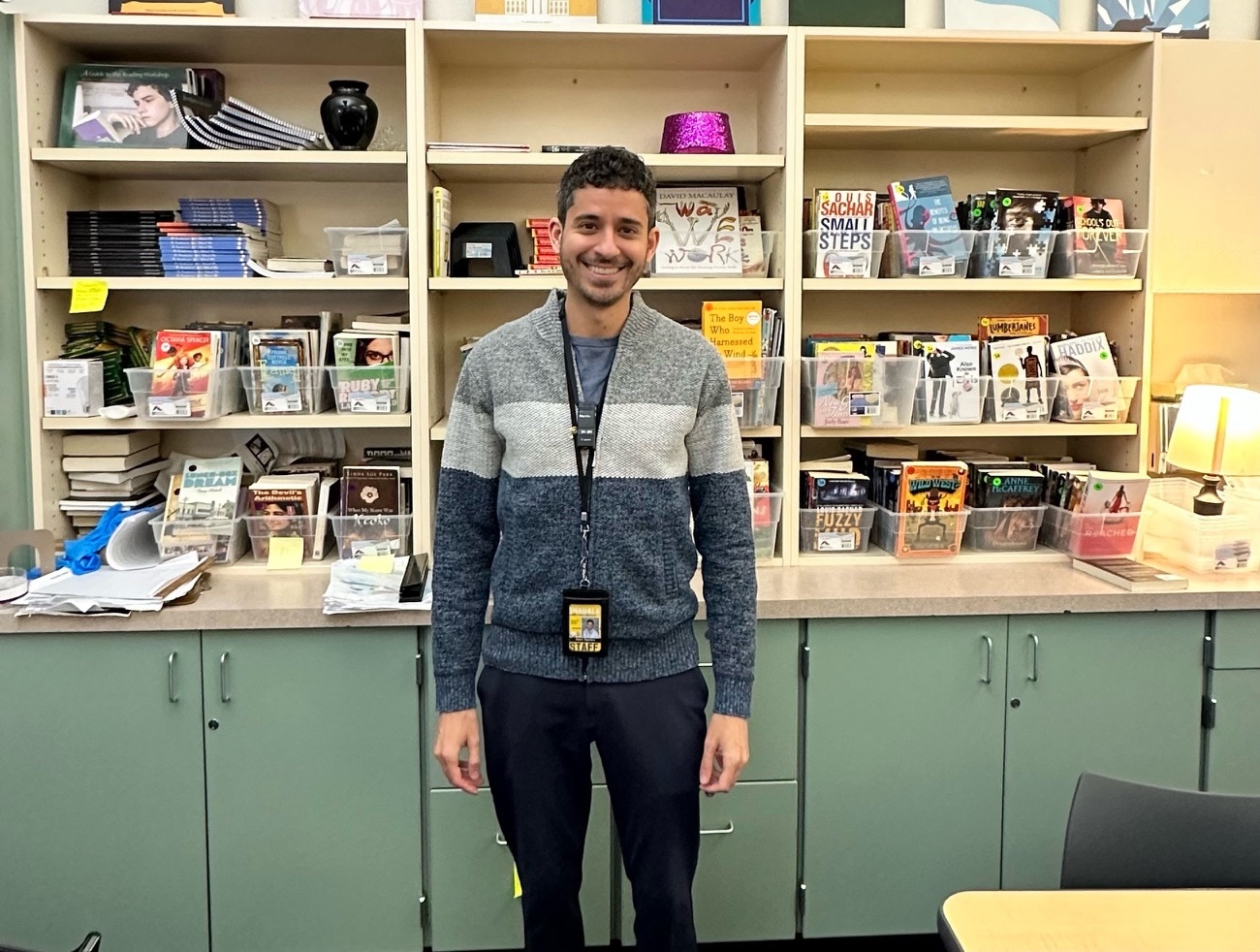
Middle school teacher Adam Aguilera saw the potential of AI in schools with the 2022 launch of ChatGPT, the chatbot that went viral for its ability to understand and generate human-like text.
“I knew it was going to transform everyone’s personal and professional lives, particularly in public education,” said Aguilera of Vancouver, Washington.
While many educators were worried that ChatGPT would lead more students to cheat and plagiarize, Aguilera embraced it. He contacted his teachers’ union, which connected him with the nonprofit AI Education Project (aiEDU), which provides teachers with free lesson plans about the intersection of AI with subjects like English and biology. The easy-to-use plans include worksheets, slideshows and other resources created by aiEDU team members who have experience as classroom educators. For example, a lesson for a U.S. government class teaches how to detect deepfakes and explains how these AI-generated manipulations can spread disinformation about political narratives.
“It’s designed to be as seamless as possible for teachers to access and integrate into what they’re already teaching because we’re not replacing an entire curriculum,” said Alex Kotran, aiEDU’s founder and CEO.
While 65% of teachers are using AI, according to a July survey of 500 educators, it’s mostly to make their jobs easier with generated lesson plans, quizzes and parent emails during a time of immense teacher burnout. Teaching students how to use AI, however, is still novel. Aguilera believes teachers should educate not just themselves but also their students on these tools’ benefits and consequences — and nonprofits like aiEDU are making that more accessible.
“We’ve opened Pandora’s box, and now we can’t put the tools back in the box,” Kotran said.
The need for AI education to be easy and equitable
There are a number of online tools for elementary and high school students to learn about AI (Google AI, Cognimates and RAISE AI Playground by MIT Media Lab are a few) as well as courses on educational platforms like Coursera and Skool of Code that can come at a cost. The challenge lies in access — not all kids know AI exists, let alone understand it’s a tool they should learn and where to find it. The onus falls on teachers to bring it into the classroom in a free and easy way.
“AI has huge potential to disproportionately impact underserved kids — Black and brown kids,” Kotran said. The people who stand to benefit the most are also the most underserved.”
AI tools can cause already marginalized groups to face more adversity, according to the American Civil Liberties Union. “AI is built by humans and deployed in systems and institutions that have been marked by entrenched discrimination — from the criminal legal system, to housing, to the workplace, to our financial systems,” ACLU senior staff attorney Olga Akselrod wrote in 2021. “Bias is often baked into the outcomes the AI is asked to predict.”

Other barriers to teaching historically marginalized communities about AI is that schools that serve these populations are often under-resourced and the teachers are overworked. Kotran, whose parents are educators, said he knows how time-consuming it is for teachers to add to new curriculum and create lesson plans. aiEDU aims to not only educate, but also promote equity by providing resources to low-income schools, he said.
“The secret to our success is not just building for core subjects but also for underserved schools,” said Kotran. “How do you build something for the under-resourced teachers who are not necessarily the early adopters?”
For his English class, Aguilera taught a unit on system recommendations — like when Netflix recommends a movie based on what the user watched in the past — using a warm-up exercise from aiEDU. He directed his students to curate a 15-song playlist on their own and then input the prompt into ChatGPT and compare how long each took.
“My students were collaborating, and it took them over 10 minutes for most of them to create a 15-song playlist,” he said. “But ChatGPT generated it in seconds. For the students, it really solidified how AI can be incredibly beneficial in maximizing their time and seeing the value of system recommendations.”
He said the exercise inspired one student to brainstorm a similar AI system for books, where students could input the kind of book they’re interested in and be shown options in their library. “Things like this spark the students’ imagination about what’s possible,” Aguilera said.
His class also delves into the potential dangers of AI, including the racial and gender bias in facial recognition technology. “It’s important to highlight it all,” he said.
David Conover, a high school teacher in North Austin, Texas, teaches video-game design, digital arts and animation. Since generative AI has significantly impacted these subjects, Conover said he needed to find a way to use the programs in his classroom.
“At first, there was a degree of apprehension because it’s a new tool,” he said. “But now, my job is to combine AI toolkits with ChatGPT, game design, digital art and animation. And teach the students how to apply those tools.”
Using the curriculum from aiEDU, Conover’s class is creating its own children-friendly guide to AI based on the popular book, “AI for the Rest of Us.”
“They’re taking the chapters, and they are illustrating them. They’re writing the story based on this book and using generative AI and ChatGPT,” he said. “It’s another way of learning about ethics in AI while you play with the tools. It’s very dynamic. You’re learning, playing and creating something that is brand new.”
Conover believes the lessons go beyond the classroom, and can even be a plus for college applications.
“This goes down on the student’s resume,” he said. “It’s what can set them apart.”


